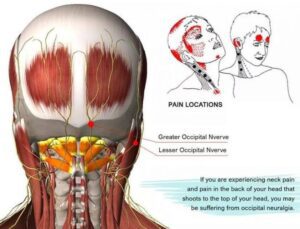 Let’s talk about this pain in the neck!
Let’s talk about this pain in the neck!
There are close to three million smartphone users in the United States. The average American spends about four and a half hours every day staring at their mobile screen. The postural position of hunching forward over a screen with slouched, rounded shoulders over an extended period of time has produced a chronic lifestyle condition called tech neck. It affects most of us.
This happens because the human head weighs 10 to 12 pounds, and with every inch the head moves forward it doubles in weight. Muscles, tendons, and ligaments have to work twice as hard to keep the head up. Our bodies were simply not built to sustain this weight!
 This unnatural posture, over time, can cause repetitive strain and injury that shows up as neck pain, shoulder pain, upper back pain, headaches, and increased curvature of the spine. Scientific research shows that daily use of smartphones that extends beyond 4 hours is responsible for poor posture, poor respiratory function, as well as clinical musculoskeletal changes.
This unnatural posture, over time, can cause repetitive strain and injury that shows up as neck pain, shoulder pain, upper back pain, headaches, and increased curvature of the spine. Scientific research shows that daily use of smartphones that extends beyond 4 hours is responsible for poor posture, poor respiratory function, as well as clinical musculoskeletal changes.
As a massage therapist it is important to know what muscles play a key role in tech neck. Our therapists work with those cervical muscles that are weakened and permanently lengthen without the ability to contract back into their normal resting position. They usually find this condition in the deep cervical flexor muscles that are connected to the neck vertebrae, in the erector spinae muscles that connected to the lower cervical spine and upper thoracic spine, and that rotate and straighten up the spine, and in the musculature between the scapulae.
 Another important structure that we look at is the occipital ridge. These muscles in the low back of our heads host a bundle of nerves that exit the spine at the base of the neck, thread their way up the back of the neck and through these muscles until they reach the skull. When these muscles are stiff they put pressure on occipital nerves and can cause issues of all kinds. In our experience working in physical therapy, we can attest to the fact that dysfunction in the suboccipital muscles contributes to the diagnosis of TMJ, sinusitis, “vision fatigue”, food allergies, post-concussion syndrome, toothache, and ear infections.
Another important structure that we look at is the occipital ridge. These muscles in the low back of our heads host a bundle of nerves that exit the spine at the base of the neck, thread their way up the back of the neck and through these muscles until they reach the skull. When these muscles are stiff they put pressure on occipital nerves and can cause issues of all kinds. In our experience working in physical therapy, we can attest to the fact that dysfunction in the suboccipital muscles contributes to the diagnosis of TMJ, sinusitis, “vision fatigue”, food allergies, post-concussion syndrome, toothache, and ear infections.
The consensus amongst massage professionals says that tech neck responds very well to certain muscles release techniques.
Elena and Lorie offer a “Head, Neck and Shoulder Release Massage” to address these issues.
They will employ the use of Myofascial Release (MFR) which is a technique that puts light sustained pressure on targeted fascia and other connective tissues to reduce pain and reestablish Range of Motion (ROM).
The treatment will also combine active isolated stretches with light massage over affected muscle groups. Finally, she will use specific points along the body’s meridians to release energy blockages, to drain retained fluids, and to support the physiology of those muscles.
Sometimes cupping is used on these points, too. The ultimate goals of this massage are pain relief, function restoration, and prevention of re-injury.
If neck pain is keeping you from doing the things you enjoy, don’t worry! A targeted massage is the best therapy to get you back to your normal routine, and to get rid of that “pain in the neck” for good!
You can book a Head, Neck and Shoulder Massage here.
